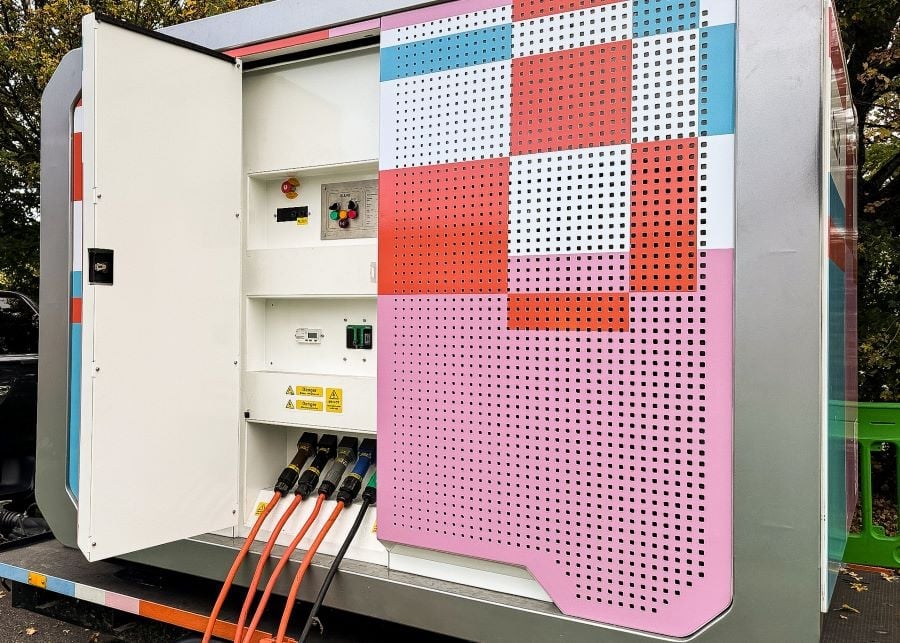Scottish and Southern Electricity Networks (SSEN) has successfully trialled a new system to assess the potential of localised battery energy storage systems (BESS) in the event of a power cut.
SSEN connected a BESS to the local network in Slough, via an existing substation. The aim of the trial was to see if BESS systems could replace the fossil fuel powered generators the network operator deploys in the event of an extended outage. In addition to avoiding the use of diesel fuel and its associated emissions, using BESS generators has another significant advantage – the BESS systems are entirely silent, unlike diesel generators.
Following the success of this early trial, SSEN will test a range of electric and hydrogen-powered batteries to assess their performance, efficiency and durability, with the aim of replacing the existing diesel generator fleet with BESS units.
Additionally, SSEN is adapting its diesel generators to run on Hydrogenated Vegetable Oil (HVO), a low-carbon fuel made from used cooking oil. According to SSEN, the use of HVO has cut the company’s CO2 emissions by 752 tonnes since the start of 2024.
Richard Gough, SSEN’s head of region for Thames Valley, said: “This process has now taken another big step forward with the deployment of a battery-powered generator on the actual network, which successfully kept customers connected. This is just one of a series of trials we’ll be conducting over the next few months, where we’ll assess the suitability of a range of solutions which are new to the market.”
BESS is a vital part of UK energy resilience
The usefulness of BESS in ensuring a consistent electricity supply for UK homes was brought into sharp focus by a recent incident where an interconnector trip sent grid frequencies plummeting. When the NSL interconnector, which links the UK and Norway, suddenly failed, 1.4GW of power flowing into the UK was immediately cut off. Within two seconds, network frequency fell as low as 49.95Hz – well below the National Energy System Operator (NESO) operational limits of 49.8 – 50.2Hz. Immediately, BESS assets from across NESO’s network were able to inject 1.5GW of power into the grid, stabilising frequencies within two minutes.
In an unrelated incident just a week prior, the Moyle interconnector tripped while transmitting 442MW of power from Great Britain to Ireland. Statkraft’s 26MW Kelwin Battery project in County Kerry, Ireland, was immediately called into action, and began exporting power within seconds, balancing Ireland’s grid in a matter of minutes.






